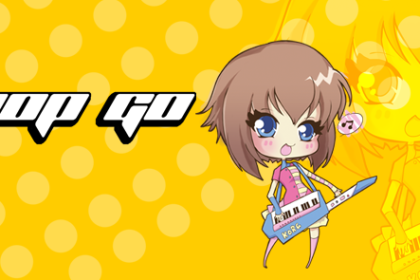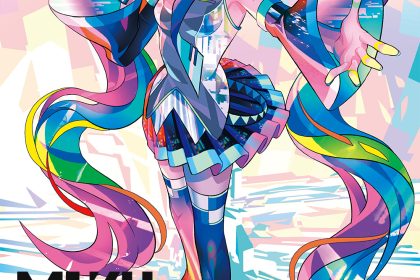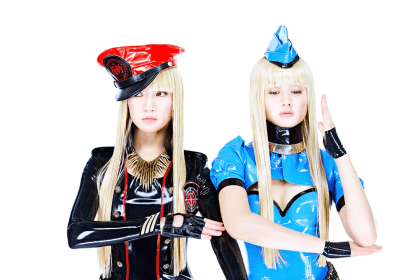It’s not just for boys!
Can K-On! simply be categorised as a moe series pandering to a male audience? Or is it lending inspiration to the female audience and encouraging their own musical ambitions? Kat Kourbetti looks at the issue…
The running joke amongst anime fans is that most series with young female heroines are predominantly created for male fans, so they can enjoy ogling pretty young things going about their everyday lives, albeit with an added element of cuteness, clumsiness, and innocence – the true Japanese signature. The genres vary in degrees of creepy; the least harmful is called moe (moh-EH), and it’s dangerously close to its perverted cousin ecchi (which in its turn is a slightly less perverted version of hentai, which everyone knows about), but doesn’t quite fit the bill just yet. Moe titles have spawned some of Akihabara’s most well known franchises, and the merchandise, including character song CDs and figurines, flies off the shelves within minutes of its release. Japanese otaku mean business when it comes to their favourite characters and their obsession often borders on unhealthy – but the pertinent question here is this: is K-On! yet another moe title?

The argument is made often. On a basic level, the criteria are met: young female heroines, a high school setting, and innumerable adorable scenes filled with the everyday antics of this ambitious girl band on their way to musical stardom. The character tropes that make up the bubbly girl band known as Hokago Tea Time (literally, “After-School Tea Time”, complete with cakes and biscuits – does it get any sweeter than that?) are found in moe titles time and again: Yui, the lead guitarist, is the classic anime schoolgirl heroine, clumsy and lazy yet naturally talented and of course instantly likeable; Ritsu is the energetic drummer, the girl who will infuse everyone with enthusiasm with a single motivational outcry; Mio is the serious, sensitive type, while Mugi is the rich girl who takes care of everyone so they can keep having tea after school instead of practising music; later on they are joined by Azusa, who completes the quintet by bringing in some much needed discipline – even though she’s so easily distracted by cakes and sweet things. The circle is completed with an assortment of secondary characters (the best friend; the younger sister who mothers the elder, irresponsible Yui; the former metalhead teacher; and so on) who surround the girl band and support them on their way to the top of the music world in Japan.
While all of this is true, so is the following: electric guitar imports and sales to young females skyrocketed in Japan since the first series of K-On! aired, as has the number of amateur girl bands in the country. Not to mention of course the sheer volume of K-On! cosplayers – the outfits on the show provide an endless gamut to pick from, and countless girls in Japan and across the world have put in considerable effort into making the costumes and parading them in conventions and photoshoots for all to see. The show is all about youthful dreaming, following one’s heart, making high school memories, and enjoying one’s time with friends before school days come to an end. We follow the girls as they improve their skills and their coordination as a group, and track their progress in song-writing and performance all the way from their school’s tiny stage to London, where Hokago Tea Time take their graduation trip in the upcoming K-On! movie. If anything, the series serves as superb creative motivation for young girls, encouraging them to not just sit idly by during their high school days, but to strive for something big and beautiful (and also really cool – who doesn’t want to be in a band?).

The characterisation of K-On! as moe is rushed and unjustified. The element of romance is often key in most moe series, yet it is conspicuously absent from K-On! because it’s not the focus of the show. There are hardly any male characters to speak of, which negates any notions of a harem (a classic moe trope in which a group of girls vie for the attention of a single male protagonist), and only minimal insinuations of shoujo-ai which are shrugged off without much thought. The subject of the show is music (and, to a lesser degree, sweets and tea) and the journey these five girls and their friends and supporters embark on.
As Paul mentioned in his case studies of Tom H@ck’s contribution to the K-On! universe and the overall musical success of the series, the show is actually quite remarkable musically – and that might well be a factor in the incredibly good run the character CDs and opening/ending theme singles have had on Oricon since the show’s inception. Traditionally, K-On! sales have occupied a top 5 position in the charts on the first week of their release, continuing on for a few weeks before trailing down. While the same thing happens with all AKB48 releases (a musical group formed of teenage girls, catering directly to the needs of the thousands of Akihabara otaku, as their name suggests), we should not be so quick to attribute K-On!’s commercial success to the same factor.
The show undoubtedly has a large male fanbase, but it also appeals to many a young girl in Japan and beyond, due to its unfussy innocence and creative character that speaks to everyone. It’s simply delightful – and not just because it’s so full of sugary goodness and yummy-looking Japanese sweets, cakes, and tea. From its great music to the motivational undertones that encourage girls (and boys alike) to listen to their hearts and follow their dreams, whatever those may be, K-On! is a show that transcends the barriers set by the tropes it utilises. All in all, a fun and enjoyable anime series that is definitely not just for boys.

- The Girl Power Revolution of K-ON! - April 30, 2012








